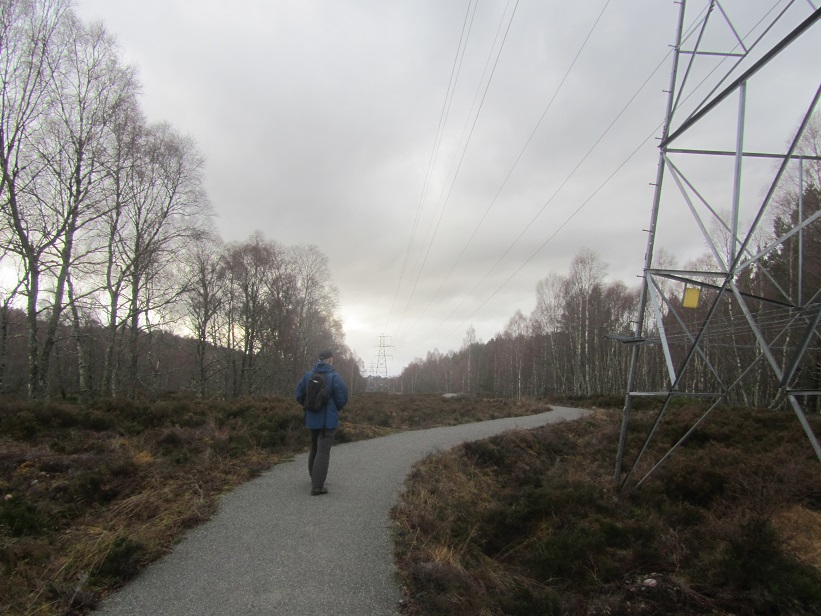
The Cairngorms National Park announced last week it has won a planning quality award for the extension of the Speyside Way from Aviemore to Kincraig (http://cairngorms.co.uk/planning-award-for-speyside-way-extension/):
“The judges praised the Park Authority for its partnership working, community consultation and sheer determination over a decade to develop the best off road route to connect Aviemore to Kincraig.
This included the first use of a Path Order in Scotland to secure rights to develop the path on the preferred route”
I think the staff involved do need congratulating on their persistence but the time taken to deliver this path and the walking experience demonstrate that our access legislation is still very weak when it comes to creating new paths and that our landowners still have far too much power. The basic problem was that the Kinrara Estate objected to the Speyside Way crossing its land, even under an electricity wayleave, and it required two consultations in 2005 and 2007, approvement in principle by Scottish Ministers in 2009, then a path order which required a public inquiry before being approved in June 2012. Three and a quarter years later the extension opened in September 2015.
No wonder the Ramblers Association cited the Speyside Way extension in its submission to the Land Reform Review Group in 2013 in the part of its submission which dealt with “Failure to expand path networks”:
“While core paths plans are now drawn up, that does not mean they are being
implemented on the ground – and core paths comprise just a small proportion of the
entire path network. As noted above, access authorities seem reluctant to use the
powers they have within the Act, and this includes powers to use compulsory purchase
or path orders. Just one path order has been used in Scotland, to extend the Speyside
Way, and this followed many years of fruitless discussion with the landowner
concerned. Much time is spent on negotiating with landowners across Scotland who
are resistant to public access, with the public becoming increasingly frustrated with
plans for path networks that they have helped to develop but which produce no change
on the ground. It is inconceivable that transport departments would spend so long
negotiating routes for new roads and yet paths do not have the same status despite
potentially being of huge public benefit.”
Now I don’t believe the ten year delay in getting the path off the ground was either the fault of SNH (who had started on plan for the path) or the Cairngorms National Park Authority who took on the work c2009. However, neither highlighted the case to the Land Reform Review Group (indeed from a trawl through the responses the CNPA did not even make a response). I think this is wrong. Our National Parks should be trailblazing when it comes to new paths and if they do not have sufficient powers to do this effectively they should be highlighting the issues to the Scottish Government.

The extension also raises significant issues in relating to the quality of the walking experience which the CNPA has simply not mentioned. Indeed in their news section they claim “we built the path on the best route for both visitors and local communities”. That is a matter of opinion but I think if the CNPA asked the public they would disagree. As one foreign visitor said, the trouble with the Speyside Way is that it avoids the river and this is very true of the new section. Of the c8 kilometres of new path, only c2 km, near Kincraig, are by the Spey.

The problem was and still is that the Kinrara Estate did not want people walking along the river, despite having a right to do so, or Bogach, the loch north of the Duke of Gordon’s monument which is a great place to watch ospreys fishing. Unfortunately our public authorities were not strong enough to stand up to the estate and the result is the Speyside Way avoids all the best things places to visit in the area. A missed opportunity. I would advise anyone who wants to experience the best that Speyside has to offer should find their own route rather than follow the Speyside Way until close to Speybank.
Apart from the route it takes, the path provides a good illustration of a number of access issues.
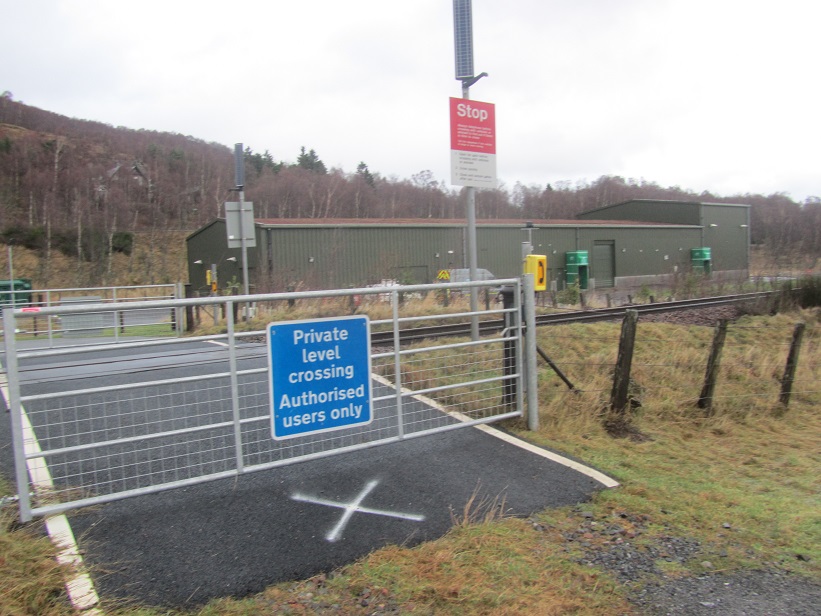
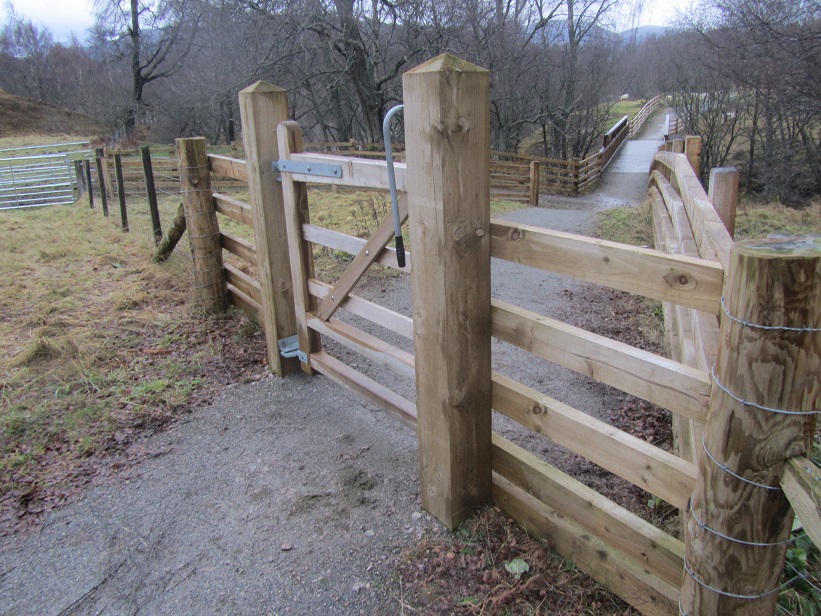
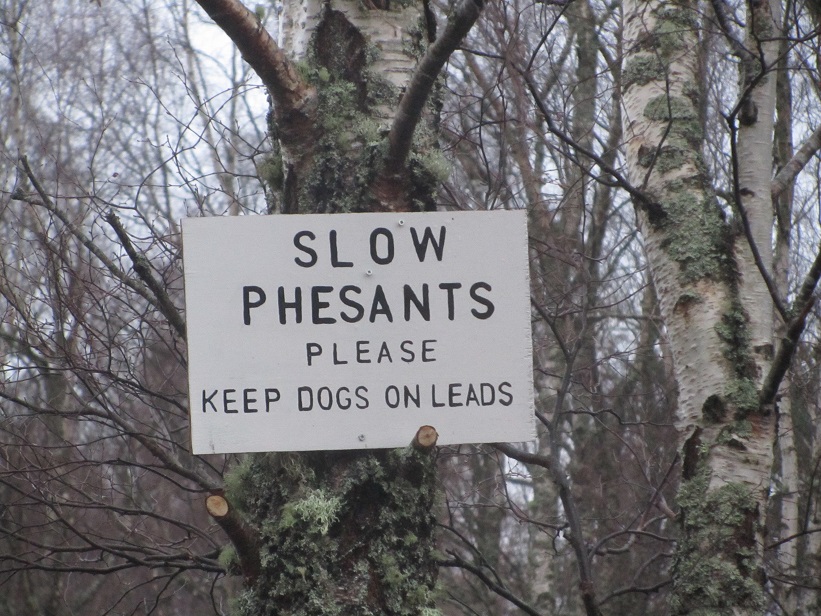
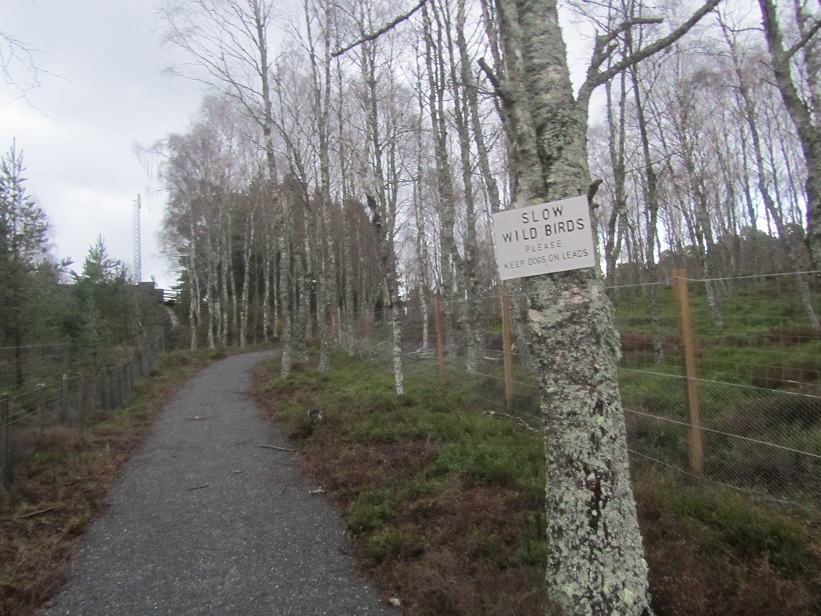
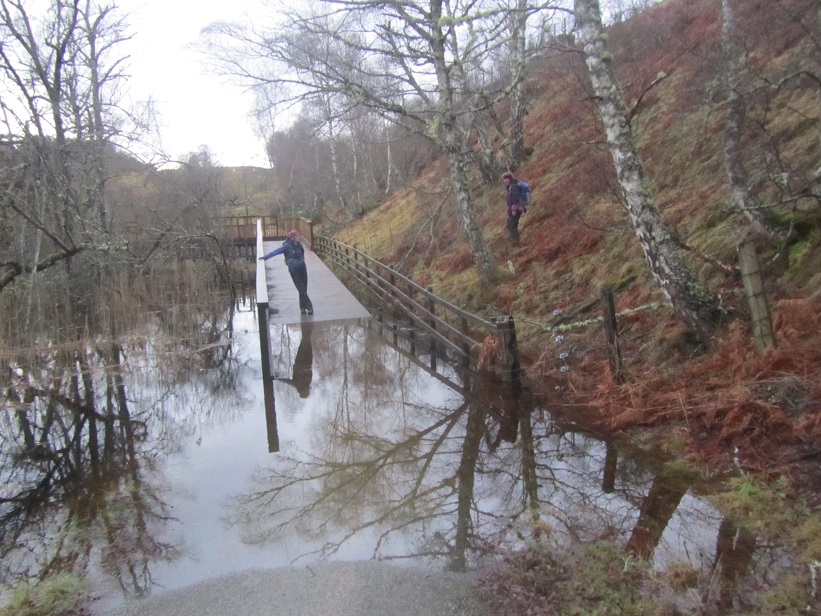
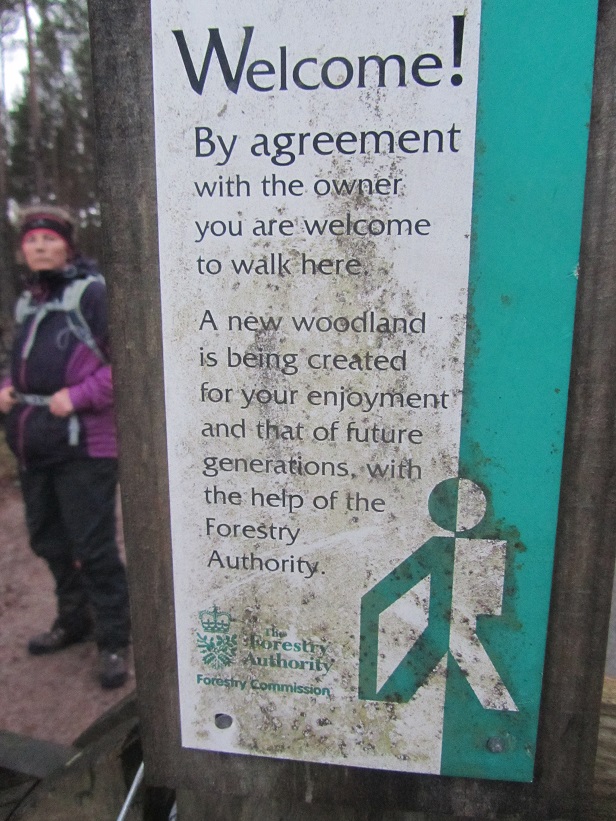 Our access legislation means that people can walk the Speyside Way extension and all the land around it whether the landowner agrees or not. Unfortunately the CNPA had not for whatever reason managed to get the owner of this wood or the Forestry Commission to remove this sign which is not compliant with the Scottish Outdoor Access Code.
Our access legislation means that people can walk the Speyside Way extension and all the land around it whether the landowner agrees or not. Unfortunately the CNPA had not for whatever reason managed to get the owner of this wood or the Forestry Commission to remove this sign which is not compliant with the Scottish Outdoor Access Code.
What should the Cairngorms National Park do about the Speyside Way extension?
Despite my criticisms, the extension is a new path and that is a plus. I think it is important though the CNPA does not in any way suggest that the Speyside Way is the only or main walking route between Aviemore and Kincraig. I would suggest the CNPA:
- Removes the signage which is not compliant with the Scottish Outdoor Access Code
- Produces a plan to reduce the fencing along either side of the path to improve the quality of the recreational experience
- Signposts alternative routes, including how to follow the Spey itself
- Stops the spin and say how it really was for the staff involved
- Use this example to argue the need for Access Authorities to have stronger powers to create new paths in the places people want to visit
I also suspect that if the CNPA had treated organisations representing recreational users, Ramblers, cyclists and horseriders as true partners, many of the problems with this path could have been avoided. The Ramblers, for example, have long campaigned again signage such as is evident on the Speyside Way extension and I believe if they had been involved it would not have been tolerated.

I quite agree, Nick, and given this point you’ve made
“A missed opportunity. I would advise anyone who wants to experience the best that Speyside has to offer should find their own route rather than follow the Speyside Way until close to Speybank.”
wonder if we really need paths at all – though I realise that visitors from outwith Scotland and even people who live in Scotland may not realise that we have the right to walk on the land unless we’re going up to someone’s front door or into their garden , walking across fields with crops in them, likely to disturb livestock and that we should keep dogs under control. If the CPNA doesn’t publicise this right and by the imposition of fenced paths undermines it, we need to do so ourselves.
The Speyside Way extension between Aviemore and Kincraig passes the Duke of Gordon Monument….a notable landmark that can be seen for miles around. Anyone who has taken the time to walk up to it will have been enthralled by the quite magnificent views, all around. Sadly, the new path does not include any access path up to the monument which is very unfortunate. How difficult would it have been to include an access path? It isn’t too late and it could still be done, if there was the will to do it.